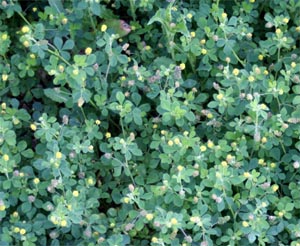
Black medic, Medicago lupulina, is a common, prostrate broadleaf weed that is found throughout the US and Southern Canada. Native to Europe and temperate Asia, this member of the legume family (Fabaceae) has a few other common names including yellow trefoil, black clover and hop medic. Its is most often found as a weed in in dry, sunny areas in turf and waste ground, such as along roadsides and railroads, but it can be a nuisance in gardens and fields as well. Black medic can be an indication of low soil nitrogen in lawns as it outcompetes weak grass. Black medic and white clover grow in similar sites and are often found growing together in turf. Although it is classified as a cool season summer annual, in mild winters some plants may survive to act as a perennial. It spreads easily by seed and will form large colonies if left undisturbed.
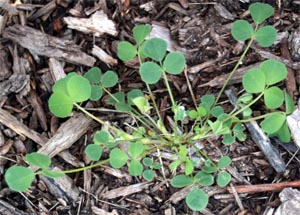
Black medic produces a long taproot that grows deeply into most soils. Several trailing, slightly hairy stems grow out from the base. The plant grows close to the ground, spreading up to 2 feet, but does not root along the stems. Like other members of the legume family, black medic has a symbiotic relationship with Rhizobium bacteria that form nodules on the roots and fix atmospheric nitrogen. Some of this nitrogen is utilized by the growing plant but some can also be used by other plants growing nearby.
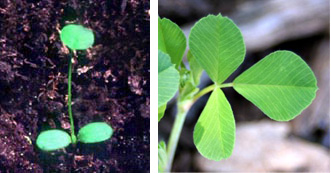
The tiny seedlings resemble other clovers, with elongate, dark green cotyledons and rounded first leaf. All other leaves are trifoliate. The plant’s dark green leaves are similar to clover leaves, with three oval leaftlets. Each ½-¾” long leaflet has a small spur or tooth at the tip, toothed margins, and prominent, parallel veins. The center leaflet protrudes slightly on an extended petiole. This characteristic, along with the small projecting tip at the leaflet apex and toothed margins, help to distinguish black medic from other trifoliate legumes. The leaves are produced alternately along the stems. There is a pair of stipules (small, leaflike appendages) where each petiole joins the main stem.
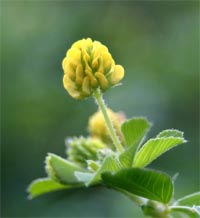
The small, bright yellow flowers are produced from the leaf axils. Each inflorescence is a compact, rounded to slightly elongated cluster of 10-50 tiny flowers. Flowers can be found throughout the growing season, although individual plants stop blooming once seeds are set. Honeybees and other bees visit the flowers. The fruits that form after pollination look like small kidneys arranged in clusters. The coiled seed pods turn black when ripe. Each seed pod contains a single gold or brown seed.
In lawns, black medic can be managed through good turf management practices that encourage a dense stand of turf (high mowing, proper fertilization and irrigation), making it difficult for black medic to persist. As black medic often grows where some soil compaction has occurred, such as along curbs and sidewalks, reducing compaction will also help.
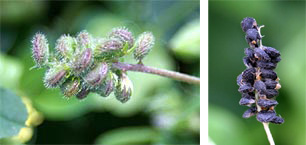
Black medic produces viable seed under normal mowing conditions which can persist in the soil for years, so it is important to control this weed before flowering and seed set. Individual plants can be hand pulled. Even larger plants are easy to pull out, particularly after rain has softened the soil. However, for large areas or dense infestations, a broadleaf herbicide can be applied to actively growing plants during the seedling to flower growth stage. Chemical controls are best applied from late spring through early summer and again from early through mid-autumn. Read and follow label directions carefully.
– Susan Mahr, University of Wisconsin – Madison
Ask Your Gardening Question
If you’re unable to find the information you need, please submit your gardening question here:





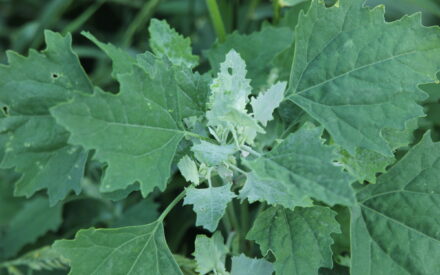 Common Weed Seedlings of the North Central States
Common Weed Seedlings of the North Central States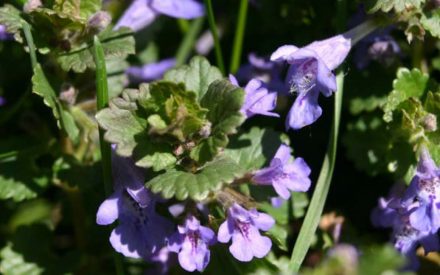 Creeping Charlie
Creeping Charlie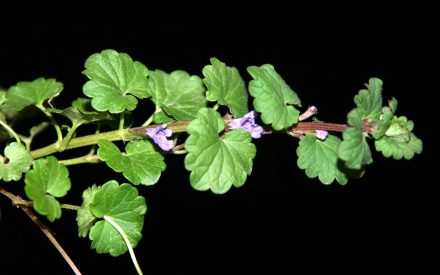 Controlling Creeping Charlie, Gleochoma hederaceae
Controlling Creeping Charlie, Gleochoma hederaceae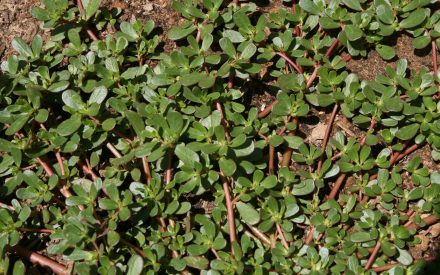 Common Purslane, Portulaca oleracea
Common Purslane, Portulaca oleracea


